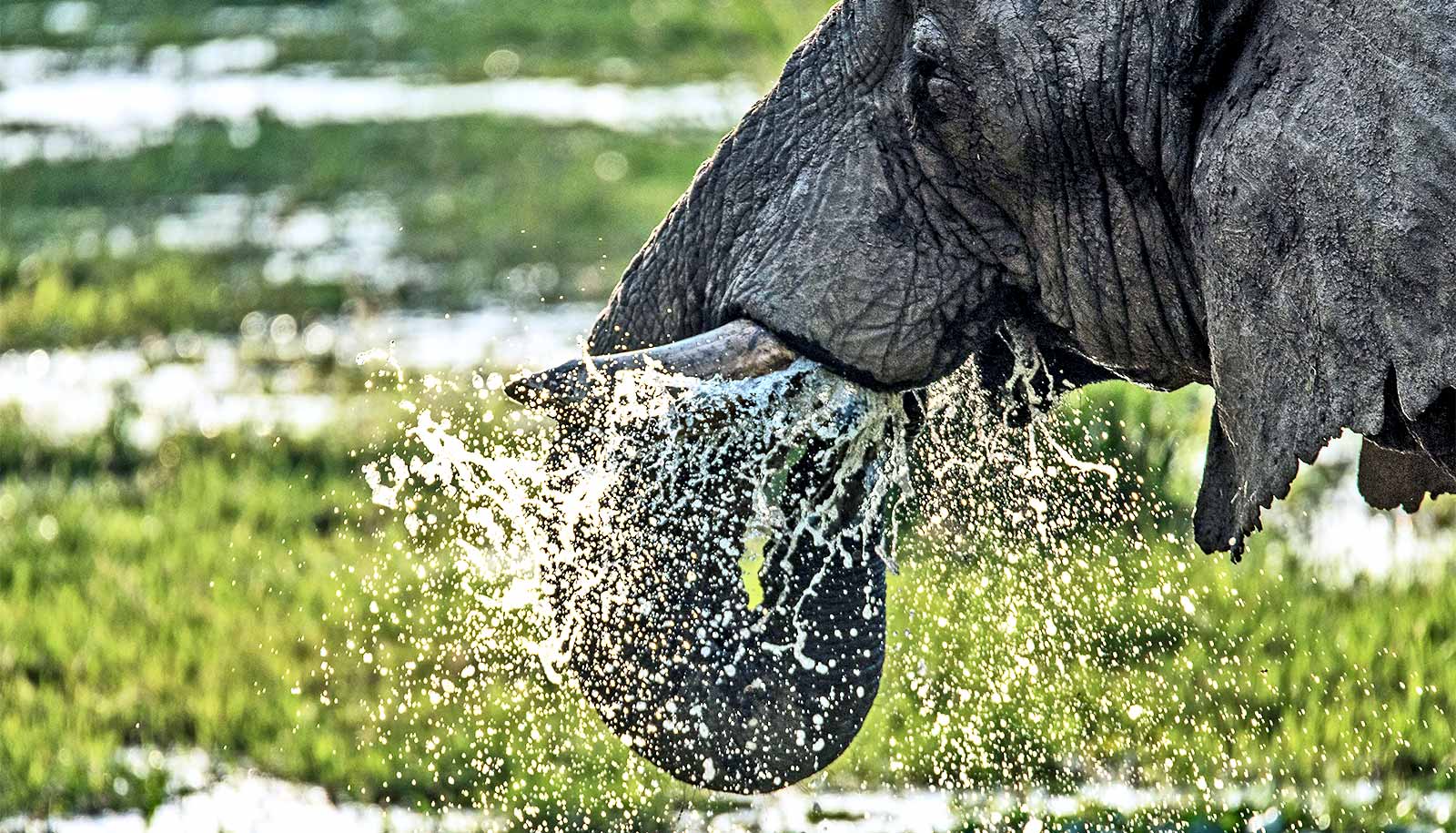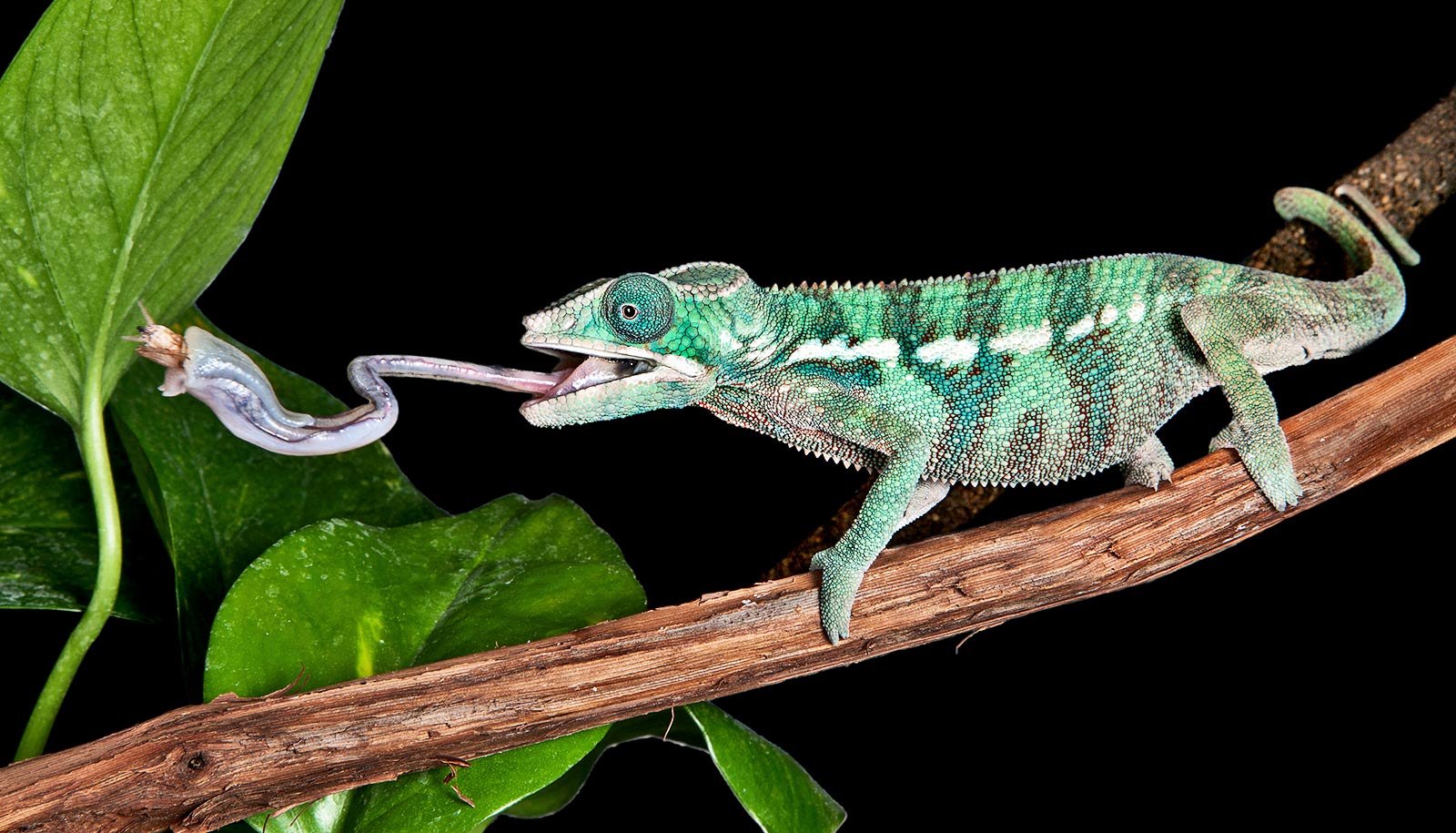The way an elephant manipulates its trunk to eat and drink could lead to better robots, researchers say.
Elephants dilate their nostrils to create more space in their trunks, allowing them to store up to 5.5 liters (1.45 gallons) of water, according to their new study.
They can also suck up three liters (0.79 gallons) per second—a speed 30 times faster than a human sneeze (150 meters per second/330 mph), the researchers found.
The researchers wanted to better understand the physics of how elephants use their trunks to move and manipulate air, water, food, and other objects. They also wanted to learn if the mechanics could inspire the creation of more efficient robots that use air motion to hold and move things.
While octopuses use jets of water to propel themselves and archer fish shoot water above the surface to catch insects, elephants are the only animals able to use suction both on land and underwater.
“An elephant eats about 400 pounds of food a day, but very little is known about how they use their trunks to pick up lightweight food and water for 18 hours, every day,” says lead author Andrew Schulz, a mechanical engineering PhD student at the Georgia Institute of Technology. “It turns out their trunks act like suitcases, capable of expanding when necessary.”

Sucking up tortilla chips without breaking them
Schulz and his colleagues worked with veterinarians at Zoo Atlanta, studying elephants as they ate various foods. For large rutabaga cubes, for example, the animal grabbed and collected them. It sucked up smaller cubes and made a loud vacuuming sound, like the sound of a person slurping noodles, before transferring the vegetables to its mouth.
To learn more about suction, the researchers gave elephants a tortilla chip and measured the applied force. Sometimes the animal pressed down on the chip and breathed in, suspending the chip on the tip of its trunk without breaking it, similar to a person inhaling a piece of paper onto their mouth. Other times the elephant applied suction from a distance, drawing the chip to the edge of its trunk.
Elephants inhale at speeds comparable to Japan’s 300-mph bullet trains.
“An elephant uses its trunk like a Swiss Army knife,” says David Hu, Schulz’s advisor and a professor in Georgia Tech’s School of Mechanical Engineering. “It can detect scents and grab things. Other times it blows objects away like a leaf blower or sniffs them in like a vacuum.”
By watching elephants inhale liquid from an aquarium, the team was able to time the durations and measure volume. In just 1.5 seconds, the trunk sucked up 3.7 liters (just shy of 1 gallon), the equivalent of 20 toilets flushing simultaneously.
Soft robots and elephant conservation
The researchers used an ultrasonic probe to take trunk wall measurements and see how the trunk’s inner muscles work. By contracting those muscles, the animal dilates its nostrils up to 30%. This decreases the thickness of the walls and expands nasal volume by 64%.
“At first it didn’t make sense: an elephant’s nasal passage is relatively small and it was inhaling more water than it should,” Schulz says. “It wasn’t until we saw the ultrasonographic images and watched the nostrils expand that we realized how they did it. Air makes the walls open, and the animal can store far more water than we originally estimated.”
Based on the pressures applied, Schulz and the team suggest that elephants inhale at speeds comparable to Japan’s 300-mph bullet trains.
Schulz says these unique characteristics have applications in soft robotics and conservation efforts.
“By investigating the mechanics and physics behind trunk muscle movements, we can apply the physical mechanisms—combinations of suction and grasping—to find new ways to build robots,” Schulz says.
“In the meantime, the African elephant is now listed as endangered because of poaching and loss of habitat. Its trunk makes it a unique species to study. By learning more about them, we can learn how to better conserve elephants in the wild.”
The paper appears in the Journal of the Royal Society Interface. The US Army Research Laboratory and the US Army Research Office 294 Mechanical Sciences Division, Complex Dynamics and Systems Program, funded the work. Any opinions, findings, and conclusions or recommendations expressed in this material are those of the authors and do not necessarily reflect the view of the sponsoring agency.
Source: Georgia Tech


